THE GERMAN SCHOOL

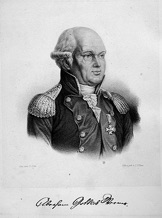

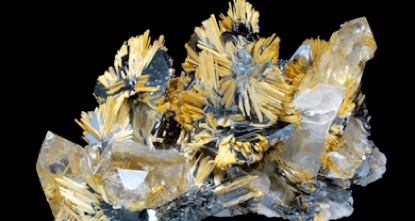
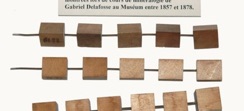

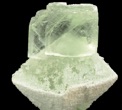
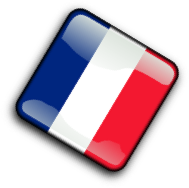
THE GERMAN SCHOOL CONQUERS PARIS
Just as Haüy had integrated various geometrical rules "forgotten" by Romé de l'Isle, the German Christian Samuel Weiss (1780-1856) will further conceptualize the discoveries of Haüy. On the basis of the 6 "constituent molecules" of the latter, Weiss defined in 1813 what will be later be named the "7 crystal systems" that Friedrich Mohs (1773-1839) and Carl Friedrich Naumann (1797-1873) will then specify.
At the MNHN, these new ideas are quickly adopted after Haüy’s death.

Les 7 crYSTAL SYSTEMS
the cube is stretched or shrinks in one direction
the cube is stretched or shrinks in two directions
the prism is tilted in one direction




the prism is tilted in two directions
short or elongated prism but with a hexagonal base
bounded by six identical diamonds

PRACTICAL WORK:
THE COMPLEX DISCOVERY OF THE 7 CRYSTAL SYSTEMS
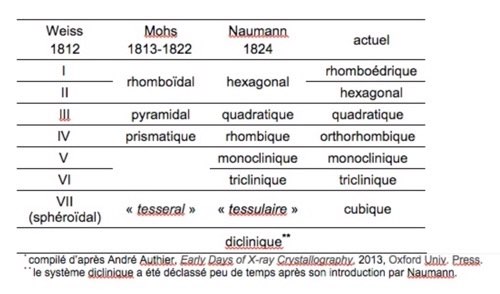
A moribund theory: the vain resistance of HAÜY
At the end of his life, Haüy saw his theory challenged: his law of symmetry did not always seem to be verified, chemical species had different molecules, minerals should mix two different molecules. After his death, the German school triumphed; it rejected the concept of molecule and preferred a continuum approach of matter.

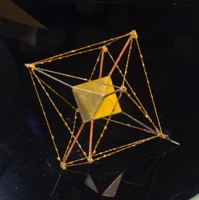
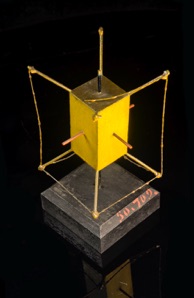
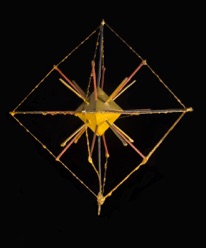
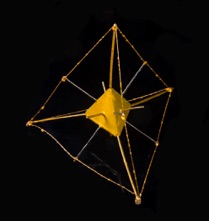
Still nowadays, we continue to describe crystal systems by polyhedral descriptions because axial descriptors are more complex to visualize. Indeed the molecular concept is way more didactic.
On the other hand, the German school rejecting the molecular approach, it will favor a more wavy theory of crystals, a theory that won’t survive much as molecules do really exist.
Gabriel Delafosse (1796-1870) tried to raise again the French crystallographic school by improving the model of his master, Haüy himself. In 1840, he proposed a structure where the integral molecule of Haüy becomes a volume which contains a molecule of geometrical form.

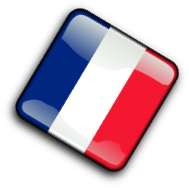
THE FRENCH ANSWERS
The "threads of molecules" illustrating the concept of crystal lattice and elementary mesh conceived by Delafosse (opposite) and shown during his courses at MNHN between 1857 and 1878. Paris, MNHN, minéralogie.
Photos : F. Farges©MNHN
The "Haüy - Weiss" fusion as seen at the MNHN before 1850 (exact year unknown): the "unequal molecules" are meshes and symmetrized by axes.
Paris, MNHN, minéralogie. Photos : F. Farges©MNHN
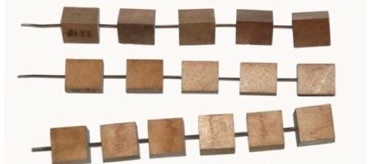
The French School will continue with Pasteur, Laurent, Bravais and many others... and eventually merged with the ones from Sweden, Germany, Russia, Great-Britain, Italy, Switzerland, the United States of America….
MORE WORRIES
But Haüy could not convince himself of these facts: he considered that the angular differences measured on calcite via the optical goniometer are due only to some impurities which modify the physical and morphological properties of crystals.
The German crystallographer Christian Samuel Weiss (1780-1856) translated Hauy's treatise on mineralogy into German, visited him in Paris and proposed a new theory based on axes of symmetry that Haüy also rejected, wrongly.
The same adventure happened to another young German, Eilhard Misterlich (1794-1863), who proposed - although clumsily - the concept of isomorphism that Haüy still rejects (wrongly).
And, in the twilight of his life, the abbot pushes the nail further and further to defend his theory of "natural simplicity", even if it means making himself more painful, refusing even to be blinded; a weakness that the German School will quickly take up to debunk the theses of the Frenchman.
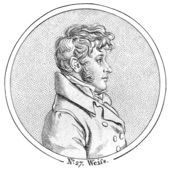
Christian Samuel Weiss (1780-1856)
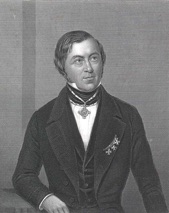
Eilhard Misterlich (1780-1856)
In this period of growing pangermanic nationalism fueled in part by Napoleonic wars, the German school seemed to triumph over the Parisian school.
WERNER AND THE RICH GERMAN SCHOOL
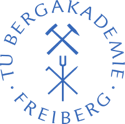
Long before Haüy, Abraham Gottlob Werner (1749-1817) described many new species from the brilliant Freiberg University of Mining and Technology where he was a student from 1769 to 1771 and then a professor from 1775 to 1817. Champion of neptunism, he marked the career of Romé de L’Isle and of Haüy by describing a wide number of new mineral species and rock types (like syenite) but not with much innovative crystallography. Freiberg will acquire many models from Haüy and thanks to their archives we can better understand their production.
Abraham Gottlob Werner
The models of Weiss-Mohs-Naumann, introduced in the Museum around 1835, are proof of this: with them, the Parisian school of crystallography demonstrates its great open-mindedness reloaded:
read Kjellman’s study on wooden models at Freiberg incl. Haüy’s (2017-2020)
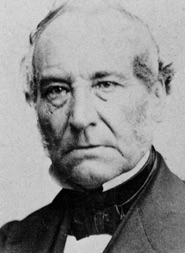


The Germans knock on the door, Haüy does not really listen to them. In the meantime, from Goethe to Beethoven, Germanities are gathering...

